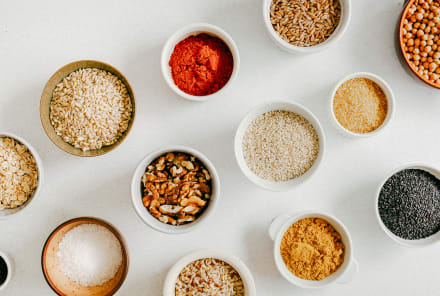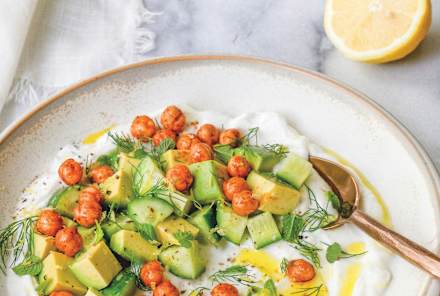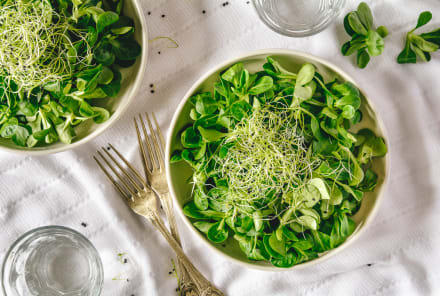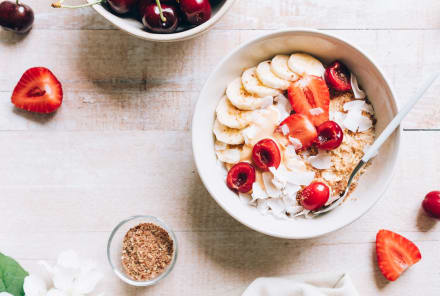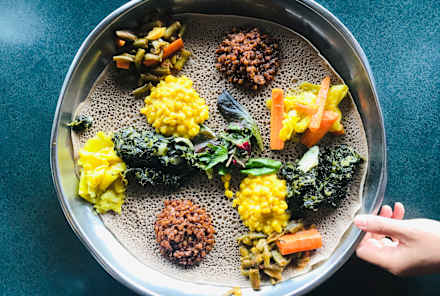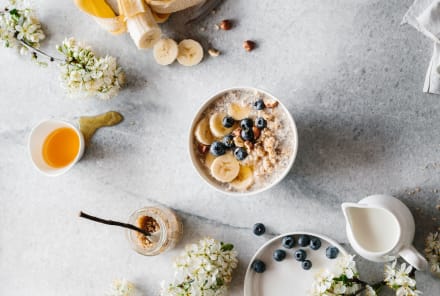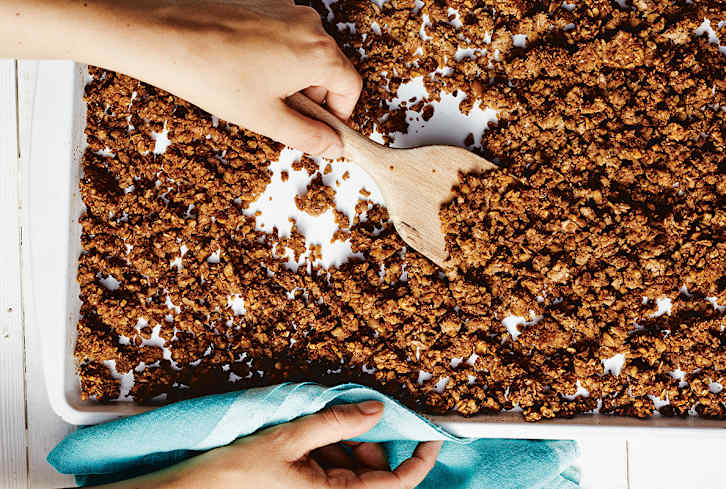Advertisement
3 Recipes To Minimize Waste & Get The Most Out Of Your Veggies

After the recent report showing how much food we waste in this country, we set out to find the best ways to make a delicious home-cooked meal while still incorporating all elements of the ingredients.
We consulted food waste expert Wen-Jay Ying of Local Roots NYC for her best recipes that minimize food waste and help you get the most out of your veggies. "I personally love utilizing stems of any green because they are super easy to cook with," says Ying. "You can pickle kale or chard stems and add them to any salad or sandwich or cheese board. Tops of root veggies are also commonly underutilized but can either be eaten raw, sautéed, or made into a pesto."
Ying suggests three ways to transform what you might've considered veggie scraps: pickle them, make a simple slaw, or blend into an easy pesto. These three strategies utilize more of your produce and are extra delicious. Here are three recipes that do each of those things, below.
Pickled Rainbow Chard Salad With Tofu Dressing
Ingredients:
- 1 bunch rainbow chard
- 1 cup rice wine vinegar
- ⅓ cup water
- 2 Tbsp. sugar
- ½ tsp. mustard seeds
- 1 tsp. kosher salt
- 4 oz. silken tofu
- 1 Tbsp. avocado oil
- 1½ tsp. soy sauce
- 1½ tsp. pickling liquid (from above)
- 1 tsp. hot Chinese mustard
- black sesame seeds for sprinkling
Directions:
1. Strip leafy greens from rainbow stems and set aside. Trim off as much green as possible from the stems, then separate into colors, yellow and pale stalks, and pink and orangy stalks. Slice stalks no more than ¼ inch thick, and place in heatproof containers, keeping the colors separate.
2. In a small pot, combine vinegar, water, sugar, salt, and mustard seeds, and bring to a boil. Carefully pour over each container of chard stalks, splitting the pickling liquid equally and reserving 1½ teaspoons for your dressing. Allow pickles to cool, at least 30 minutes. This can be done ahead of time as well.
3. In a small food processor, combine tofu, oil, soy, mustard, and reserved pickling liquid, and blend until smooth.
4. Chiffonade chard greens and place in a large bowl. Strain cooled pickled stems out of their liquid (which can be saved for another future use), and mix with greens. Either toss the salad with the dressing before plating, or drizzle on after. Finish with a sprinkling of black sesame seeds.
Vegan & GF Cone Head Cabbage Slaw
Slaw Mixture ingredients:
- ½ head cone head cabbage, thinly sliced or chiffonade
- 1 bunch beet greens, thinly sliced or chiffonade
- ½ bunch Swiss chard, thinly sliced or chiffonade
Your greens should yield about 4 to 6 cups. If you have too many greens to handle, throw some in the freezer and add to smoothies, pizzas, soups, and stir-fries later.
Creamy Tahini-Lime Dressing ingredients:
- ¼ cup smooth tahini
- ⅓ cup fresh lime juice
- 2 tablespoons apple cider vinegar
- ¾ teaspoon cumin
- Pinch of sea salt
- ¼ cup olive oil
Directions:
1. Add the tahini, lime juice, apple cider vinegar, sea salt, and cumin to a bowl, and whisk to combine.
2. Slowly drizzle the olive oil into the tahini mixture while whisking. This will create a cohesive, emulsified dressing.
3. Adjust seasonings to meet your flavor preferences.
4. Pour over 4 to 6 cups slaw mixture. You will probably not need the whole dressing recipe to cover the slaw, so add it in a couple of tablespoons at a time, and toss to coat the greens as you go.
Radish Top Pesto
Ingredients:
- Radish tops (or any other vegetable tops), chopped into 2-inch pieces (about 4 cups)
- 3 to 4 oz. Parmesan cheese
- 1 tablespoon honey
- 3 garlic cloves
- ½ cup roasted walnuts (or any nut that you prefer)
- Juice of half a lemon
- 1 teaspoon lemon zest
- Around ½ cup olive oil, plus extra to pour on top
- Salt and pepper to taste
Directions:
1. In a food processor, pulse the garlic, Parmesan cheese, and roasted walnuts until coarsely chopped.
2. Add the radish tops a couple of handfuls at a time, and pulse until coarsely chopped.
3. Add honey, lemon juice, and zest, and pulse a few more times to incorporate.
4. Pour in the oil slowly while the food processor is running until you reach your desired consistency. You may need to add more or less depending on what you prefer. Add salt and pepper to taste.
5. Store the pesto in a jar and add a layer of oil on the top to prevent oxidation. The pesto should keep about a week in the fridge.

Why Nutrition Is Key To Changing Your Relationship With Alcohol
Brooke Scheller, DCN, CNS

Why Alcohol Sabotages Your Gut Health & How To Get Back On Track
Brooke Scheller, DCN, CNS

Why Nutrition Is Key To Changing Your Relationship With Alcohol
Brooke Scheller, DCN, CNS

Why Alcohol Sabotages Your Gut Health & How To Get Back On Track
Brooke Scheller, DCN, CNS

Why Nutrition Is Key To Changing Your Relationship With Alcohol
Brooke Scheller, DCN, CNS

Why Alcohol Sabotages Your Gut Health & How To Get Back On Track
Brooke Scheller, DCN, CNS

Why Nutrition Is Key To Changing Your Relationship With Alcohol
Brooke Scheller, DCN, CNS

Why Alcohol Sabotages Your Gut Health & How To Get Back On Track
Brooke Scheller, DCN, CNS
